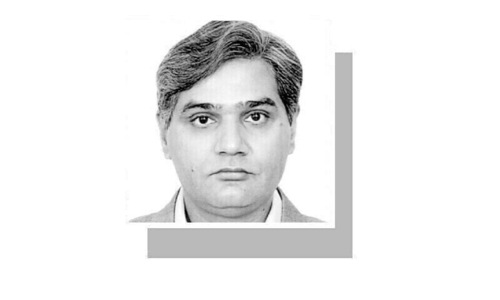In the third week of May this year, a tribute to Imam will take place to recognise his life, art and dream by the Central Institute of Arts and Crafts (CIAC) which will try to look more closely at his vision for the CIAC, which—neglected for sometime—has gradually faded from the memory of the art community.
Imam was asked to take over the CIAC by its founders shortly after 1966 when he had just returned from London. In the time that followed, he worked enthusiastically to put into place a modern curriculum that he had studied in the UK. The CIAC graduates who spent years with Imam and built a lifelong bond with him remember him with affection and respect as a teacher with an eye on the larger vision of art and its education.
Even though Imam left the CIAC to establish the Indus Gallery in 1970, his pedagogic influence on a generation of artists and painters cannot be denied. He continued to take a select group of talented painters as his students at the studio in the gallery and also flew frequently to Dharki in Sindh, where a large resident population of executive officers of a multi-national was located, to lecture on art.
The '70s were mainly devoted to running the gallery and developing a cadre of collectors who could financially sustain art and artists in the country by building collections, that he hoped, some day, would find their way into national museums.
During this decade Indus Gallery launched newcomers like Lubna Agha, Mehr Afroze and Nahid Raza among others. He was the first to recognise the emerging force of women artists and gave them a group show on a scene that was dominated by big names like Bashir Mirza and Ahmed Pervaz.
The Indus Gallery which was housed in the front portion of his house near Nursery in Karachi was open to all and most days Imam Sahib, as he was affectionately called, would be seen there. If you happened to go in the afternoon, he would be seen serving his children lunch if the help had not turned up or helping them with homework. So the space was amorphous with an organic relationship between life and art. The visitor never felt it was a commercial enterprise because there was always a discussion on art with Imam when you visited. The emphasis on price or on who is in demand and who is not was not his concern, excellence in art was. It was almost as it was his mission to help people understand art for what it was a creative human expression. Imam was happy to sell art but never as a commodity but as recognition of creativity. He worked closely with artists always asking them to challenge themselves in their work.
More than encouraging collectors to buy, he helped them to develop an eye for good art. His Sunday afternoon sessions with artists and art collectors were famous. Many collectors, writers and artists and an equal number of walk-in guests attended these sessions. Heated discussions and falling out among his friends was a matter of routine but the camaraderie remained because Imam was always the binding factor that helped these crucial exchanges become a 1970s' version of the earlier coffeehouse conversations in Lahore.
From people who were a part of these gathering have emerged artists like Wahab Jaffer, a self-taught talent who came late to art, and noted art collector Aftab Tapal among others. Shafi Aqeel's biographies on Karachi artists may have been partly inspired by the friendships he developed here.
A champion of freedom of expression and human rights, Imam—during the dictatorship of Zia Ul Haq—took great risks to hold Nagori's banned show, even if for just one day, for people to see his scathing visual commentary that echoed the nation's sense of anger and injustice at the repressive regime.
The last time I met Imam it was in the hospital. He had suffered a heart attack and was under treatment. We talked about his health and then as always it led to a discussion on art. He said he was feeling better and expected to be home in a few days.
A few weeks later I got the news of his death while I was away on holiday.
I often think about how I never got a chance to complete many debates we had together and say a proper good bye to the patriarch of Karachi art scene. Each time I visit the Indus Gallery, which is run by Mrs Imam now, I somehow expect to see Imam Sahib coming down the stairs with his pipe and start discussing the artists' work on display.
The memory of Ali Imam remains vibrant through his art, institutions like the CIAC and Indus Gallery and the students who inherited his vision and want to keep it alive.












































